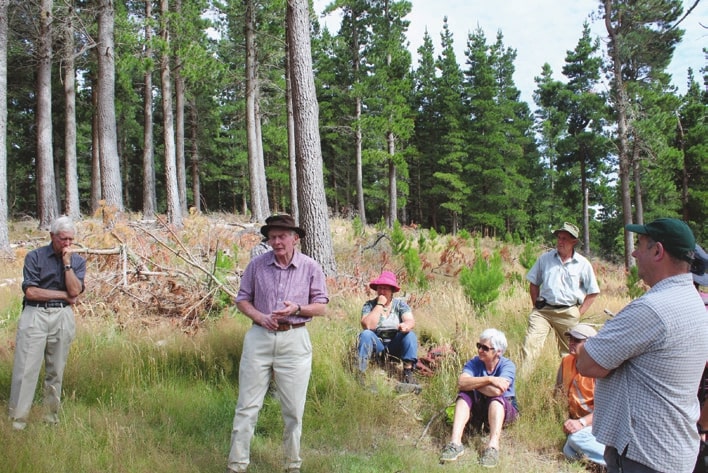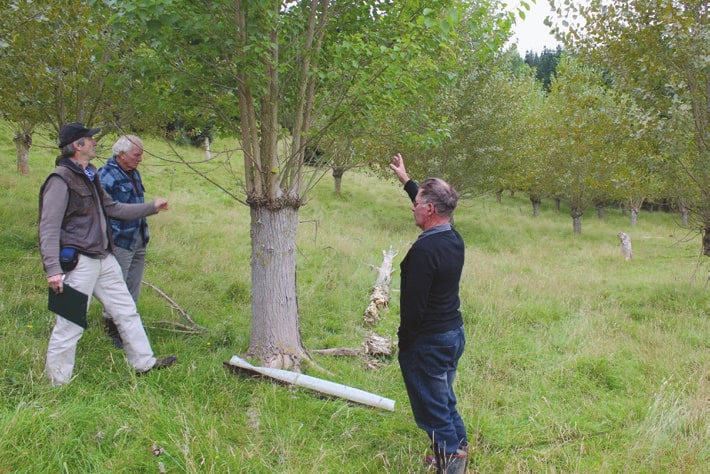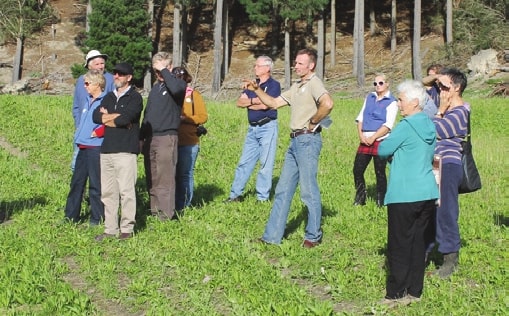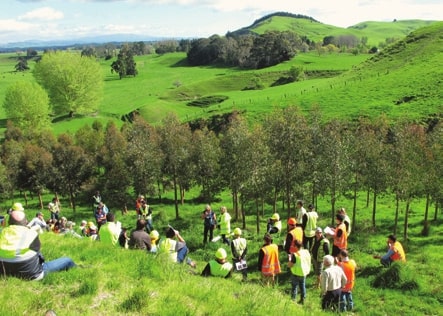Neil Barr Farm Forestry Foundation aiming in right direction
Nick Ledgard, New Zealand Tree Grower August 2020.
These days I seem to be getting a lot more queries about forestry and trees on farms than I have for some decades. The reasons are the rising role of trees in combating climate change combined with land owner realisation that they have to incorporate more trees on to their land in order to be seen as sustainable and animal friendly.
In addition, there has been a period of better returns for fibre and timber, coupled with the much promoted potential income from the accumulation and sale of carbon units via the Emissions Trading Scheme. Underlining all this is the greater funding and advice available for establishing trees.
Return to the early 1980s
In a way, forestry and the use of trees on farms is back where it was in the late 1970s and early 1980s. At that time, the NZ Forest Service was in full stride, and oversaw the widespread expenditure of Forestry Encouragement Grants using over 30 forestry advisors working at no cost to the end user.
The area of new forests being established annually was 10 times what it has been in recent years. Tree planting on farms was reaping the rewards of Neil Barr’s very popular articles in the NZ Farmer journal, and the practical field workshops which he ran with his good friend, Harry Bunn, recently retired from the Forest Research Institute. Neil was father of New Zealand’s farm forestry movement, which he initiated in the mid-1950s.
Farm Forestry Foundation formation
It was in 1986 that NZFFA member and lawyer Mike Malloy drew up and registered the first trust deed for the Farm Forestry Foundation, with its mission statement of ‘promoting and encouraging the planting of trees on farms’. The first trustees were Neil Barr, Mike Smith, Peter Smail and Bruce Treeby along with the then President, John Mortimer.
In 1996, the name was changed to the Neil Barr Farm Forestry Foundation, mainly as a way of remembering Neil’s enormous contribution to founding the NZFFA and its operating principles which have endured almost unchanged to the present day. Current Trustees are Dougal McIntosh Chairman, Murray Downs Secretary, Patrick Milne, Denis Hocking, Nick Ledgard and Hamish Levack NZFFA President.
Raising funds
A combination of donations and wise investment has allowed the Neil Barr Farm Forestry Foundation to accumulate a current investment account of just under $500,000. The majority of this is managed in a long term balanced portfolio held with Forsyth Barr along with a smaller amount in Milford Assets Fund. The nett assets may seem considerable, but it needs to be grown much larger if we are to reach a position where significant projects can be regularly supported.
This is especially important now that the NZFFA has assumed responsibility for an estimated 14,000 smallscale forest owners who have a major say in the future of the plantation forestry sector. An updated deed signed in 2016 allows for more attractive pathways for donating money and being part of the Neil Barr Farm Forestry Foundation’s decision-making processes. We urge you to think seriously about how you can help us in reaching our aim of getting more trees on farms.




Distributing funds
Many of you will know about the Neil Barr Foundation and its broad purpose, but few would be aware of its success to date. Over the last 22 years since 1998 it has disseminated over $220,000 in the promotion of more trees on farms. This has been in 76 annual allocations, although some were for the same project in different years.
Annual allocations have ranged from $142 to over $30,000, with a mean amount of around $10,000 a year. In recent years the largest amounts have been to the NZ Dryland Forests Initiative to help with their comprehensive search for the right durable eucalypts for New Zealand conditions. Very recently, it has been extremely satisfying to read of this project reaching the stage where farm foresters will be able to order
genetically improved ground durable eucalypts for planting on their own property. As far as the Neil Barr Foundation is concerned these funds have been spent well.
During the last three years, over $20,000 has gone towards researching specialist harvesting small stands. Are we being as cost-efficient as we should be when large crews and equipment are used to harvest our smaller plantations and woodlots? An article on this topic by the School of Forestry’s Kristopher Brown and Rien Visser appeared in the August 2017 issue of the Tree Grower. Although we look upon these sorts of projects as extremely important for farm foresters, we also readily consider much smaller applications.
Spreading the word
Research projects are expensive and results can be a long time coming especially in forestry with success far from guaranteed. We therefore particularly like passing on existing knowledge.
In 2016, we supported the publication of John Wardle’s new book Woodside, which records his experiences after decades of continuous cover forestry with beech and radiata forests. In the same year, we provided funding towards building on a series of nationwide Trees on Farms workshops organised between 2012 and 2014, which revealed a deeper than expected interest in getting more trees on farms. The funds were used to interview 15 different rural organisations including the likes of Dairy NZ, Beef and Lamb NZ, Irrigation NZ, Federated Farmers and Rural Women NZ – relative to their interest in learning more about farm forestry.
The response was overwhelmingly positive. As a result, a proposal was written to develop a partnerships project to facilitate the use of NZFFA experience by the members of the various rural organisations. The Neil Barr Foundation was right behind such a move, but it failed to attract the necessary support and funding from elsewhere.
The future
After almost 30 years of existence, the Neil Barr Farm Forestry Foundation can safely say that it has made a significant contribution to advancing the use of trees on farms. Enabling us to do this has been our success in building up a substantial capital sum from which future funds can be allocated. This sum needs to increase as there remains a large untapped potential for the wider use of trees on farms – a potential which an increasing number of farmers and primary produce processors are starting to recognise. With our depth of experience and case study sites, plus our nation-wide representation, the NZFFA and the Neil Barr Farm Forestry Foundation are obvious organisations to lead the way forward.
The Neil Barr Farm Forestry Foundation needs your support to −
- Increase its capital base
- Suggest projects for funding which will promote more trees on farms.
Nick Ledgard is one of the trustees of the Neil Barr Farm Forestry Foundation.

 Farm Forestry New Zealand
Farm Forestry New Zealand

